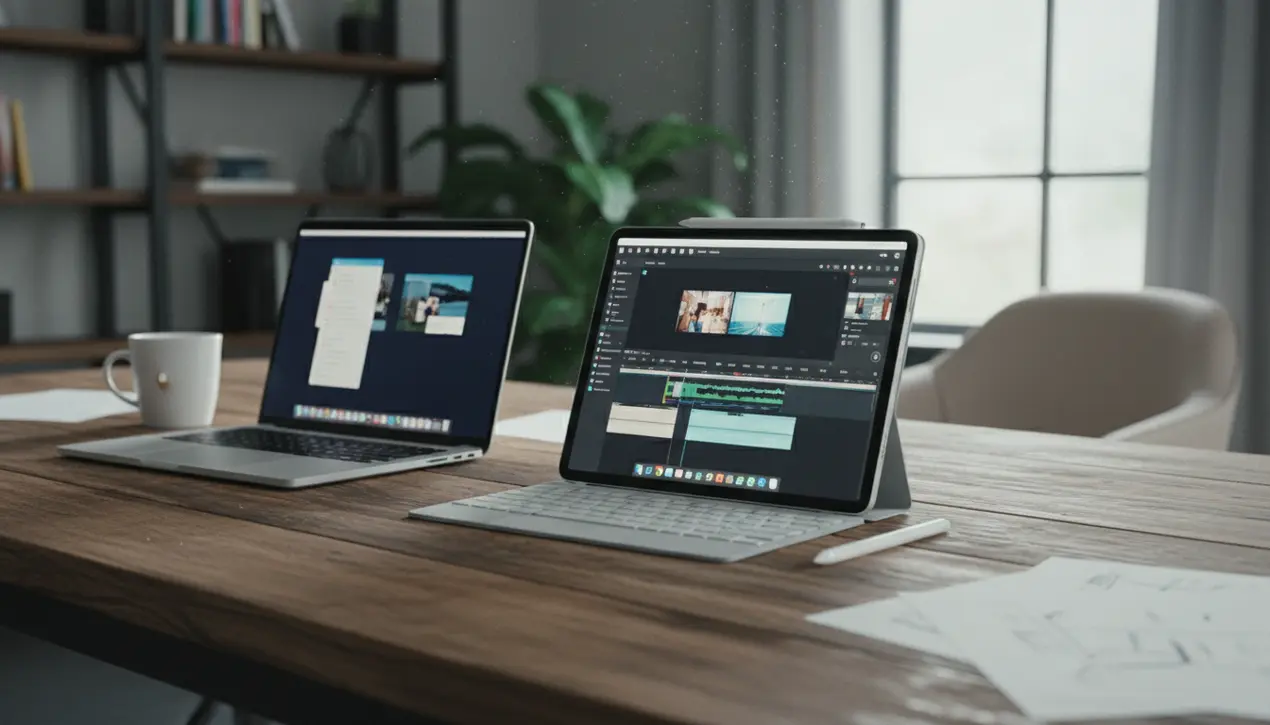
Otherauto & mobilityElectric Vehicles
The iPad Has Never Been More Like a Mac, but Can It Replace One?
AN
Andrew Blake
2 hours ago7 min read
The perennial question of what even constitutes a computer in this day and age is thrown into sharp relief by the latest iPad Pro, a device that feels less like a tablet and more like a machine engaged in a silent, high-stakes philosophical debate with Apple's own MacBook lineup. With the introduction of the blisteringly fast M4 chip, a stunning tandem OLED display that makes other screens look antiquated, and finally, a truly professional-grade version of Final Cut Pro, the iPad has never been more like a Mac.It’s a convergence that has been years in the making, a slow-motion merger of two product categories that Apple has, until now, meticulously kept separate. Yet, this isn't just a story of technological evolution; it's a story of identity and purpose.Can this sleek, touch-first slate, no matter how powerful, truly replace the workhorse laptop that has been the cornerstone of professional and personal computing for decades? To answer that, you have to dive into the nuances of what we actually *do* with our machines. For a certain class of user—the digital artist sketching in Procreate, the musician composing in GarageBand, the journalist jotting notes with the Apple Pencil—the iPad has already been a replacement for years, offering an intuitive, direct-manipulation interface that a trackpad and keyboard can't match.The new power simply cements that position. But step into the world of complex, multi-window workflows, advanced software development, or even robust file management, and the cracks in the 'iPad as a computer' argument begin to show.iPadOS, for all its refinements, still feels like a walled garden compared to the open plains of macOS. The file system, while improved, can be frustratingly opaque.The inability to run standard, non-App-Store software remains a fundamental limitation. It’s the difference between a brilliantly efficient and curated tool and a versatile, open-ended platform.This isn't necessarily a failure on Apple's part; it might be a deliberate strategy. By blurring the lines but not erasing them, Apple creates a compelling reason for users to exist within its ecosystem, potentially owning both a Mac for deep work and an iPad for mobility and creativity.The real question becomes: is this a transition phase, with the iPad slowly absorbing the Mac's capabilities until one product line can finally subsume the other? Or is this the permanent state of affairs—two complementary devices, each optimized for a different mode of thinking and creating? Looking at the broader tech landscape, this internal Apple tension mirrors a larger industry shift. Microsoft has been trying to fuse the tablet and laptop with its Surface line for over a decade, with mixed results.Google’s ChromeOS is another attempt at redefining the computer for a cloud-centric world. The iPad Pro's current trajectory suggests that the future of computing isn't a single, monolithic device, but a constellation of specialized tools connected by a seamless ecosystem.So, while the new iPad Pro is a breathtaking piece of engineering that can undoubtedly serve as a primary computer for a growing number of people, its ultimate success might not be in *replacing* the Mac, but in forcing us to finally abandon the rigid, 20th-century definition of a computer altogether. It’s not about which device wins; it’s about how our relationship with technology continues to evolve into something more personal, more fluid, and far more interesting.
#iPad
#Mac
#tablet
#computer replacement
#technology
#product comparison
#editorial picks news
Stay Informed. Act Smarter.
Get weekly highlights, major headlines, and expert insights — then put your knowledge to work in our live prediction markets.
Comments
Loading comments...
© 2025 Outpoll Service LTD. All rights reserved.